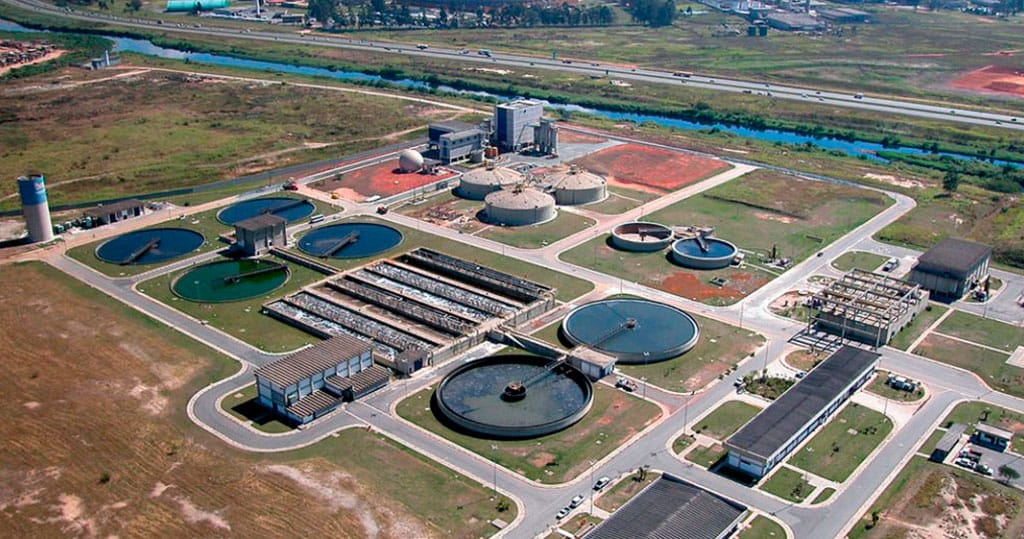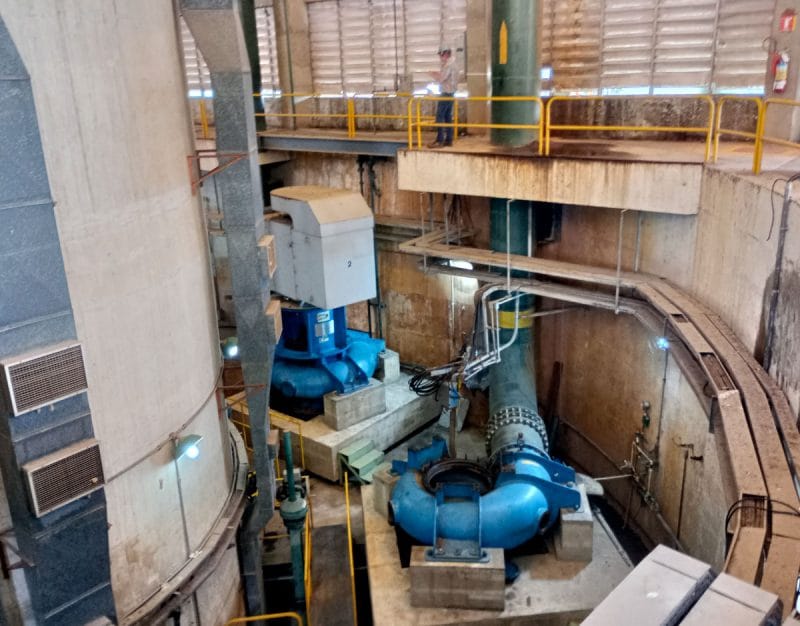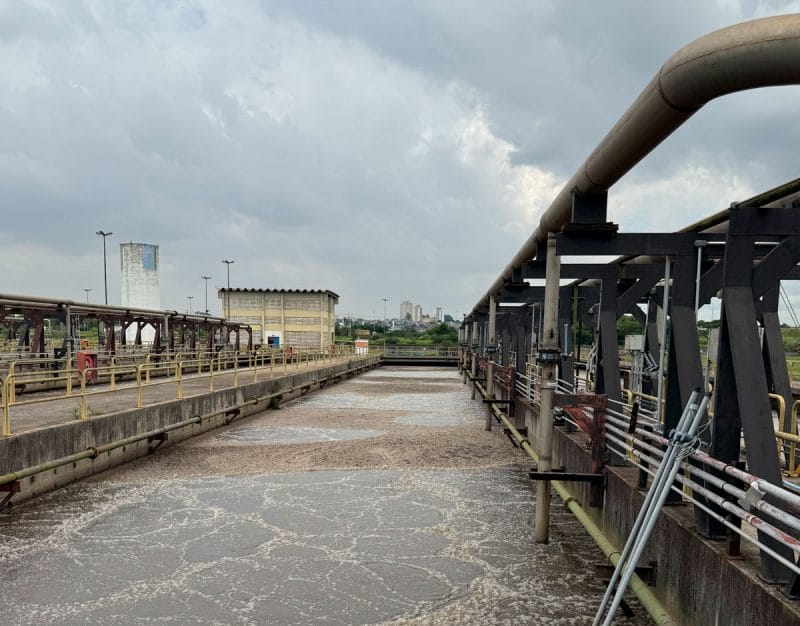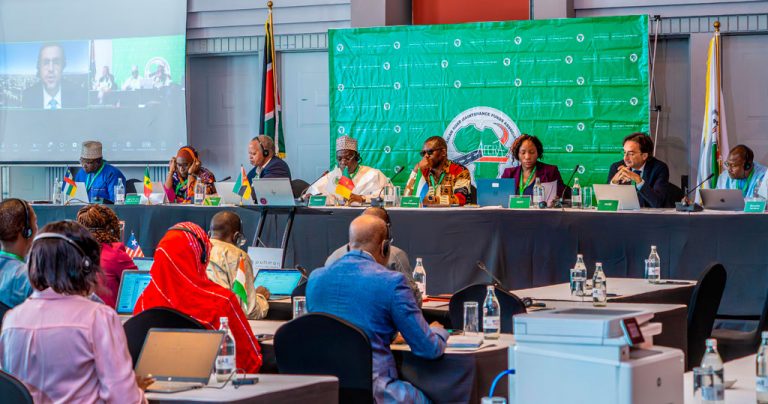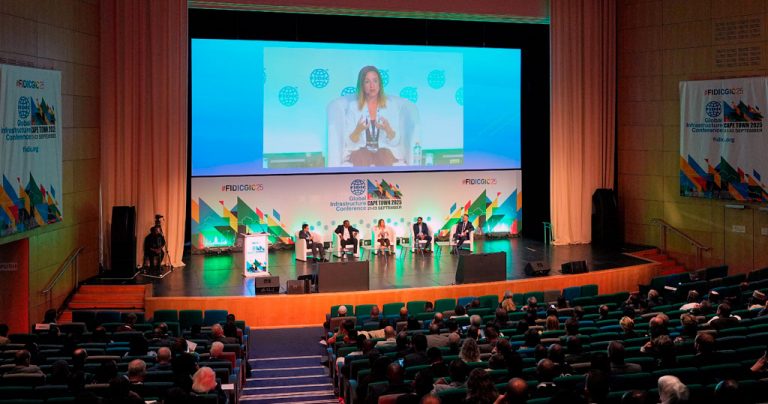Introduction
The Tietê River Decontamination Programme, which was launched in the 1990s following widespread social movement, has established itself as the largest environmental sanitation project in Brazil. In the first three phases, wastewater treatment plants were built and expanded, kilometres of collection networks and interceptors were implemented, and treatment capacity was significantly increased. As a result, the collection rate reached 87% and the treatment rate 84%, benefiting more than 13 million people in the metropolitan region of São Paulo. These advances prepared the ground for Phase IV (Integra Tietê), whose objective is the universalisation of the sewer service and the recovery of river water quality.
The works planned in this phase include the expansion of the São Miguel wastewater treatment plant (WWTP), located in the east of São Paulo. In operation since 1998, the station currently treats 1,500 litres of wastewater per second and serves more than one million inhabitants of the capital. Over the past few years, it has undergone modernisations, improving its efficiency, operational safety and reducing its environmental impact.
The station uses the conventional activated sludge treatment process. The solid phase (primary sludge combined with secondary sludge) is treated using gravity thickeners, followed by anaerobic digesters and dehydration in filter presses for final disposal in a sanitary landfill. The station was originally designed to meet a final project flow of 6,000 l/s, through the phased implementation of 1,500 l/s modules. However, the operating flows were reviewed by SABESP in 2023, and it was determined that the new average capacity of the final project should be 5,500 l/s, making it the third largest in the country.
 Pumping Station – São Miguel WWTP
Pumping Station – São Miguel WWTP
In recent years, the São Miguel WWTP has undergone updating processes to increase its efficiency and operational safety, including the renewal of equipment, industrial automation and the complete restructuring of the operating units. The interventions, within the framework of the programme, aim to ensure greater reliability in treatment, greater energy efficiency and lower environmental impact, directly contributing to the quality of life of the population served, which exceeds one million people in the capital of São Paulo.
The expansion of the São Miguel WWTP is a fundamental milestone in phase IV of the Tietê River Decontamination Programme. Rather than increasing treatment capacity, the project is committed to technological innovation, sustainability and energy efficiency, in line with the future demands of the São Paulo metropolitan region.
In this context, SABESP signed a contract with the consortium formed by Engecorps, part of the TYPSA Group, and Senha Engenharia e Urbanismo for the provision of consulting services to carry out the study of alternatives, the conceptual and preliminary design for the expansion of the São Miguel WWTP, within the framework of the Tietê River Decontamination Programme — Phase IV (Integra Tietê).
Expansion of the São Miguel WWTP
The expansion works were planned in two phases to guarantee immediate increases in treatment capacity and, at the same time, preparing the station to meet the future goals of the Tietê Programme — Phase IV. In both phases, technological decisions were aimed at optimising the use of existing structures, reducing operating costs and prioritising solutions with a lower environmental impact.
- 1st Phase — Expansion from 1,500 to 2,100 l/s
In this initial phase, the station will continue to use the conventional activated sludge process, a consolidated technology that ensures the efficient removal of organic cargo. Operational adjustments will be made to biological reactors to improve efficiency and reduce energy consumption, making the most of existing infrastructure.
 Aeration Tank of the São Miguel WWTP
Aeration Tank of the São Miguel WWTP
In the sludge treatment phase, improvements are expected in thickening and dehydration systems, as well as the incorporation of controlled heating, which favours the stability of the process and increases the production of biogas, which can be reused in the plant itself.
- 2nd Phase — Expansion from 2,100 l/s to 5,500 l/s
The second phase marks the increase in capacity and introduces new treatment units. In the liquid phase, the existing biological process is maintained, but with additional modules, allowing greater operational flexibility. The objective is to treat higher volumes of wastewater without compromising efficiency in the removal of contaminants.
In the solid phase, sludge digestion capacity will be expanded, with the possibility of using low-temperature thermal drying technologies, which reduce the final volume of waste and facilitate its disposal. The biogas generated in digesters will play a central role: one part will be used to heat the reactors, and another can be used to dry sludge or to cogenerate electricity, reducing dependence on external sources.
Technological Solutions
Among the technological solutions being analysed, the following deserve to be highlighted:
- Desander Chambers
To optimise pretreatment, two alternatives were studied: conventional expansion, replicating existing units, and the adoption of high-rate sedimentation technology, with a compact system that allows the removal of particles starting from 0.075 mm.
The high-rate alternative involves less space occupancy, with a compact system, although the conventional alternative remains viable through the adoption of adequate operating rates and efficient devices for sand extraction.
- Biological Treatment
Reducing the organic load and nitrogen input to biological treatment reactors is essential to optimise operation and reduce expansion costs. In this way, three alternatives were analysed: conventional primary decanting, a traditional solution already in operation; CEPT (Chemically Enhanced Primary Treatment), which uses coagulants and polymers to increase solid removal, reducing energy consumption but without a significant increase in biogas production; and the 3-Phase Compact Primary System, an innovative staged technology that operates with a very low sludge age, maximising the diversion of organic matter to anaerobic digestion and expanding the generation of biogas significantly.
- Mud Treatment
Regardless of the secondary treatment alternative chosen, the solid phase maintains a standardised configuration: thickening (by gravity and mechanically), mesophilic anaerobic digestion, and dehydration followed by thermal drying, until reaching a solid content greater than 80%.
Final Considerations
With the completion of the study of alternatives and the definition of the most appropriate technologies for expanding the treatment capacity of the São Miguel WWTP, it will be possible to complete the basic project and make it possible to tender the works.
It is worth mentioning the technical knowledge acquired by Engecorps throughout the development of this work, resulting from research and analysis of technologies and treatment processes that are still incipient in Brazil and abroad, but are recognisably promising and widely accepted in the academic field. In this way, Engecorps reaffirms its position at the forefront of the country’s design companies and reinforces its technical capacity to face new challenges.


